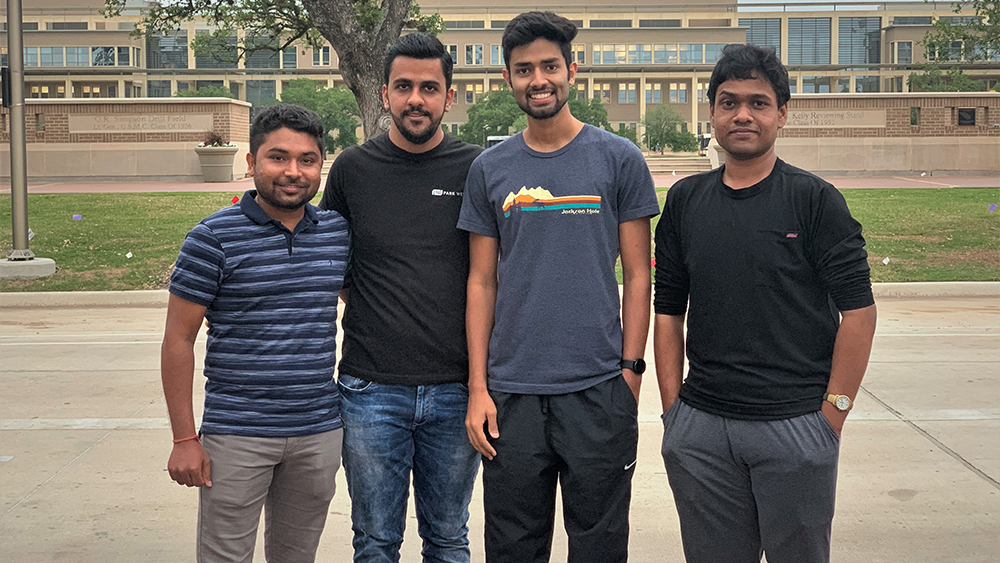
A team of students, including two doctoral students from the Department of Electrical and Computer Engineering at Texas A&M University, was awarded first place in the 2021 Texas A&M Institute of Data Science (TAMIDS) Data Science Competition out of 44 teams involving more than 100 students.
The contest, held between March 3 and April 14, centered on the role of money in U.S. presidential elections. During the competition, student teams developed models to predict the impact on electoral outcomes of contributions and spending by campaigns and donors, and used these to develop recommendations for where funds should be directed in the future.
“We had to observe patterns, check the effectiveness of the expenditures and provide some inferences and recommendations as to where to invest the money for the next presidential elections,” said team member Sambandh Dhal. “Eventually, we were able to create an interactive website to show our project and provide a platform for others to explore and dive deep into our analyses.”
The Data Noobs team’s project was comprised of several analyses including that of industry donations, which highlighted the sponsors for different parties; expenditures, which revealed how money was spent across the U.S. and defined a matric named Return on Investment (ROI) for Democrats and Republicans during the 2012, 2016 and 2020 elections; and a network analysis that showed the correlation between the datapoints through the use of clustering algorithms.
Money spent during the 2020 election totaled $14.4 billion, more than doubling the total cost of the $6.5 billion 2016 presidential election cycle. Along the same line, the expenditures varied according to different parties and states. These expenditures, along with the demographics data of the state, were analyzed by the Data Noobs team during the TAMIDS competition. According to the Data Noobs’ findings, in 2012, a correlation was found between states with low expenditure and election results. Every state that the Republican party had invested approximately less than $3 million was secured as red states. Similarly, in 2020 the team found that the Democratic party decreased their investment in states they were confident in securing the majority of votes.
The Data Noobs team also received the award for “best supplementary materials.” The group included Dhal and Swarnabha Roy, computer engineering doctoral students; doctoral student Tushar Pandey from the Department of Mathematics and master’s student Ritesh Singh Suhag from the Mays Business School.